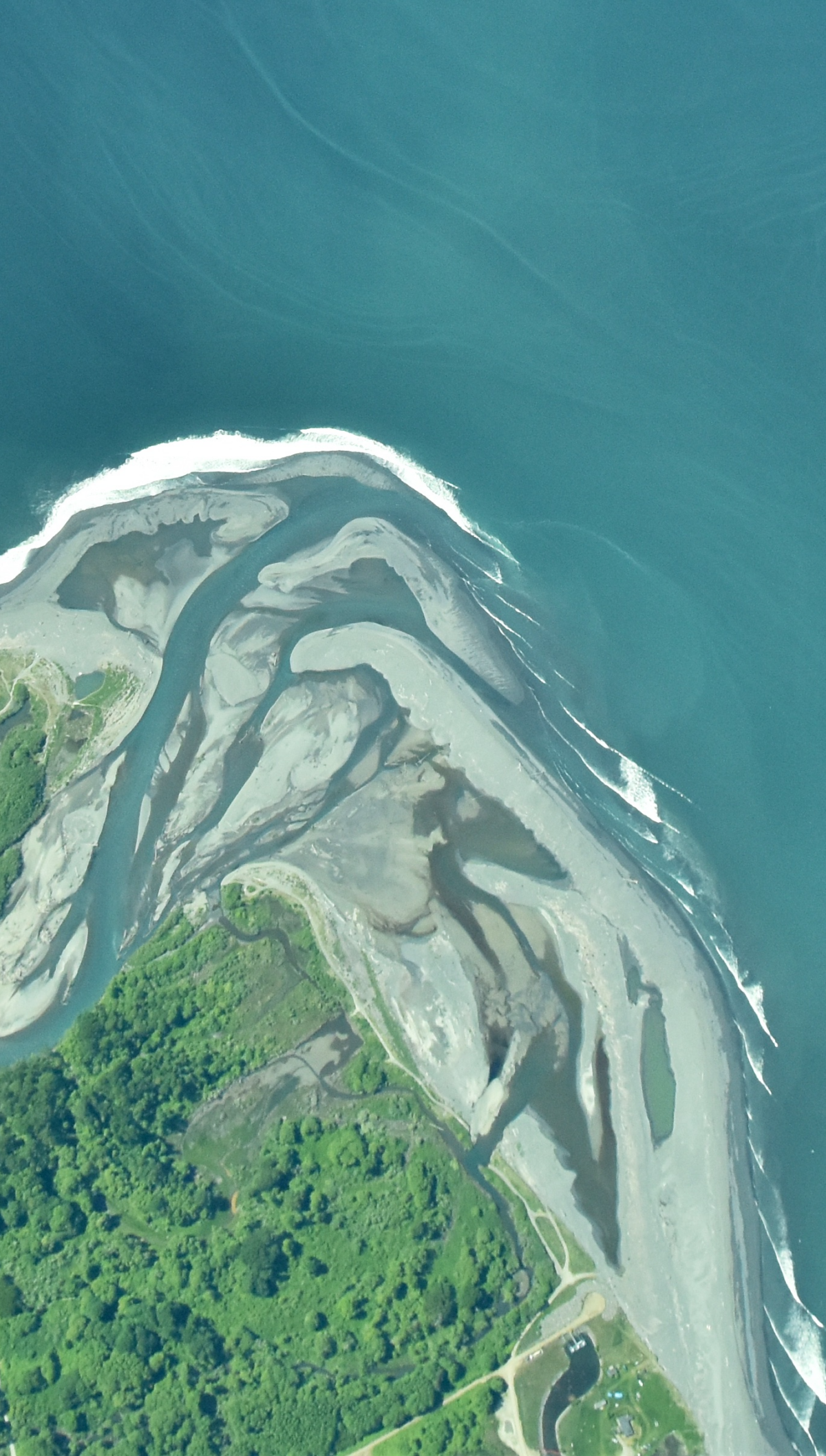
Tribe Hooks Coho On Elwha, First Fishery Since Moratorium
In the first of hopefully more easings of the state and tribal fishing moratorium on the Elwha that began in 2011, the Lower Elwha Klallam Tribe is holding a ceremonial and subsistence fishery on the now damless north Olympic Peninsula river, using rods and lures to catch coho.

DETAIL OF THE MOUTH OF THE ELWHA RIVER. (SAM BEEBE, FLICKR, CC BY 2.0 DEED)
The fishery was agreed to during this spring’s North of Falcon salmon-season-setting process and overall this month there is an expected tribal catch of up to 400 fish. The Seattle Times reports today that allowable set netting is being “put off” until later in October so as to give Lower Elwha Klallam members “a chance at such a limited fishery.”
“This completely filled my spirit to be back on the water again, to be able to exercise my treaty rights just as my ancestors did and fought for,” Vanessa Castle, a tribal fisheries tech who’d caught two coho, including one she estimated at 15 pounds, told reporter Lynda V. Mapes.
The moratorium went into place ahead of the removal of Elwha and Glines Canyon Dams, which at the time was the largest such project in U.S. history but is now being eclipsed by the removal of four dams on California’s Klamath River. Salmon and steelhead are returning to portions of the upper Elwha, but Chinook and coho runs are also being supported by hatchery production and past trap-and-haul work.
The tribe’s C&S fishery is limited to the lower 3 miles of the Elwha, handheld gear and set nets, and snagging is not allowed, under the 2023-24 agreement reached by WDFW and the Northwest Indian Fisheries Commission. The fishing period is October 1-30.
NWIFC earlier this year said that data from the fishery “will be crucial in developing future in-river commercial and recreational fisheries for coho and other salmon species.”
“And then the thought has been with the tribe’s amazing patience over you could say the last 100 years, we would want to see how to get those treaty fisheries out there first,” WDFW Region 6 fisheries manager James Losee told The Seattle Times this spring.
A late April press release from WDFW, NWIFC and the National Park Service explained, “Recreational and commercial fishing will resume when there is broad distribution of spawning adults above the former dam sites, spawning rates allow for population growth and diversity, and a harvestable surplus of fish are returning to the Elwha River.”
Correction, 8:27 a.m., October 11, 2023: Yesterday’s Seattle Times story was by Lynda V. Mapes, not Isabella Breda, as mistakenly attributed in the since corrected third paragraph. My apologies to the reporter.
